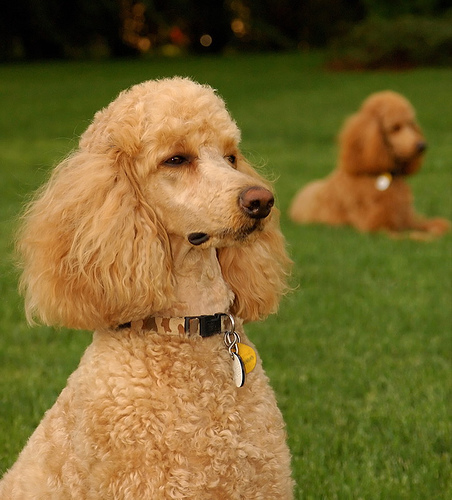
Understanding dog behavior and the kind of environment a dog needs will help anyone be good to their new best friend.
While there are now several different breeds, it is believed that all dogs evolved from one type of wolf. This is a result of breeding practices which were used to create dogs for specific purposed like hunting or guarding. Dogs have been companions to people for thousands of years, but they still share some characteristics with their ancestors. Like wolves, dogs will bury their food, form packs, and mark their territory. Owners should understand that these behaviors cannot be unlearnt. Further traits may be a result of a specific breed. Dogs typically live between 12 and 14 years, and understanding and patient instructing will help a dog and owner develop a routine.
Watch a dog's behaviors because learning how a dog communicates is crucial. Owners should pay attention to signs like growling, barking and defensive or submissive positions to indicate when a dogs is nervous or angry. Happy dogs will wag their tails and show excitement in their movements. Whether hungry, sleepy or needing a bathroom break, dogs do their best to tell owners what are they thinking, and the owner should pay attention.
Dogs do not need luxury accommodations or mints under their pillows, but simple considerations ensure a dog will have a comfortable environment. Dogs need a warm and dry area where they can rest and feel safe. Keep this area and anywhere the dog can reach free of items that could harm the dog. Dogs should have toys and regular exercise to stay busy, or they will may resort to other measures like chewing shoes and scratching floors to burn energy.
Think ahead before choosing a dog. Some dogs may not like houses with children, other pets or too many people. If keeping a dog outdoors, make sure the dog is protected from the elements and has suitable living conditions. Some breeds require extra care and attention while other breeds are less fussy and more independent.
Dogs and owners form lasting, loving relationships. This is easy to develop when taking a dog's breed, behavior and needs into consideration.
 10 Dog Breeds For Laid Back Lifestyles
10 Dog Breeds For Laid Back Lifestyles
Make Room On The
10 Dog Breeds For Laid Back Lifestyles
10 Dog Breeds For Laid Back Lifestyles
Make Room On The
 My Dog Jumps Up On People
The doorbell rings and next
My Dog Jumps Up On People
The doorbell rings and next
 Dog Breed: Beagle Lab Mix
Dog hybrids are slowly becom
Dog Breed: Beagle Lab Mix
Dog hybrids are slowly becom
 The Top Ten Cutest Puppy Pictures of All Time
Alright Alright I know. &nbs
The Top Ten Cutest Puppy Pictures of All Time
Alright Alright I know. &nbs
 Hypoallergenic Dogs List - The Best Dog Breeds For People With Allergies Or Asthma
Dogs For People With Allergies Or Asthma
Whenever I
Hypoallergenic Dogs List - The Best Dog Breeds For People With Allergies Or Asthma
Dogs For People With Allergies Or Asthma
Whenever I
Copyright © 2005-2016 Pet Information All Rights Reserved
Contact us: www162date@outlook.com